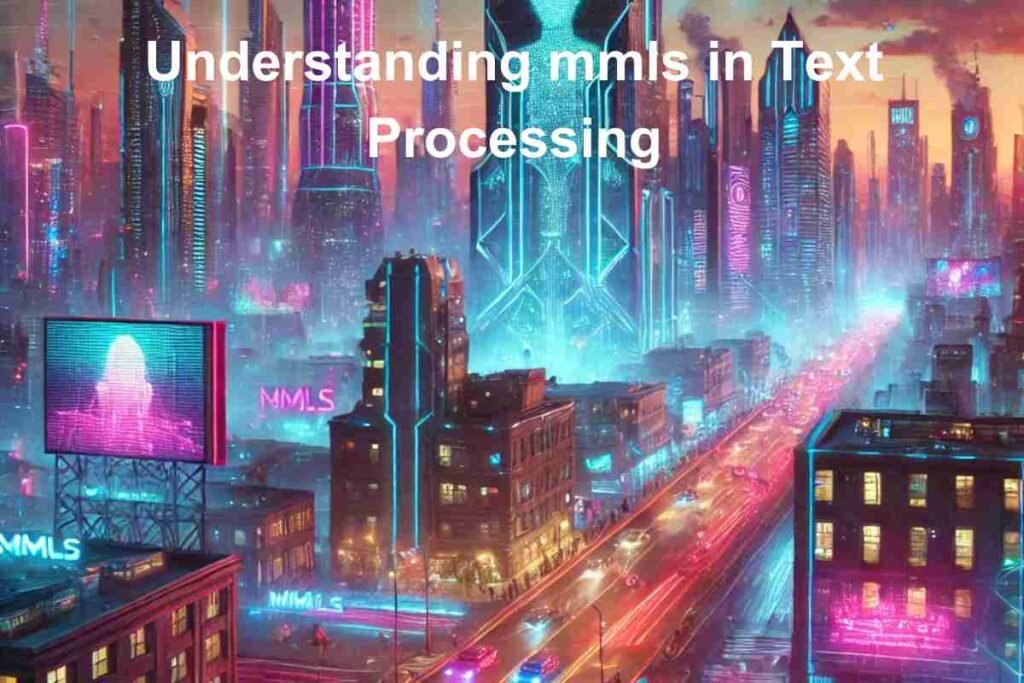When working with large volumes of text data, Multimedia Learning Systems mmls combined with TfidfVectorizer Latent Semantic Indexing LSI and K Means Clustering provides a powerful way to analyze, categorize, and organize documents efficiently. This approach not only streamlines workflows but also uncovers hidden insights, reduces errors and enhances collaboration across teams.
Whether for academic research business analytics or personal projects understanding and implementing mml can significantly improve text processing outcomes.
Understanding mmls in Text Processing

This isn’t just limited to multimedia systems; it plays a crucial role in structuring text data for machine learning applications. By applying TfidfVectorizer to convert text documents into a numerical matrix, this helps represent the importance of words in each document effectively.
How to Measure Success with mmls?
Use metrics such as:
- Time saved
- Error rate reduced
- Turnaround time improved
- User satisfaction or feedback
Tracking these helps you know if site is working well.
Who Should Use mmls?
mmls is not limited to large companies or technical users. It is designed for anyone who wants to simplify complex tasks or systems. Small businesses can use site to streamline customer service, inventory management, or billing processes. Teachers and students can use it to organize academic content and assignments.
Even individual professionals like freelancers, designers, or consultants can benefit from using to manage their workflow. The key is understanding your needs and applying site to improve how work flows from start to finish.
How Does mmls Simplify Large-Scale Document Analysis?
mmls streamlines large scale document analysis by integrating TfidfVectorizer, Latent Semantic Indexing (LSI) and K-Means Clustering. This combination converts text into numerical matrices identifies hidden themes and groups similar documents efficiently.
By automating categorization and highlighting key terms mml reduces manual effort improves processing accuracy and enables faster insights from vast text datasets. Its structured workflow also enhances collaboration and ensures consistent, reliable results across teams
TfidfVectorizer in mmls
One of the critical components of document processing is the TfidfVectorizer, which:
- Uses TfidfVectorizer to convert text documents into a numerical matrix, representing the importance of words in each document.
- Applies stop_words=’english’ to remove common English words that don’t carry much meaning.
- Utilizes use_idf=True and smooth_idf=True to weight terms appropriately, ensuring that rare but significant terms get the recognition they deserve.
How mmls Improves Collaboration?
Collaboration becomes easier when everyone follows a common structure. mml ensures that each team member knows what to do, when to do it, and how their part connects with others. It reduces miscommunication and increases accountability.
Many sites tools offer real-time updates, shared access, and notifications, which help teams stay in sync. Whether your team is remote or in-office, using creates a central workflow that boosts coordination and output.
Tips for Implementing mmls
- Map out the process before beginning
- Use simple, clear definitions
- Document each step for teams
- Test with small data or events first
- Monitor performance and gather feedback
Challenges with mmls
- Requires clear rules and definitions
- Setup may take time and effort
- Needs regular review to stay efficient
- Team training is key to success
mmls in Education and Learning Systems
In education mml can be used to structure lesson plans, track student progress, and automate grading systems. Teachers can define specific milestones or steps in a curriculum, making it easier for students to follow and complete their academic goals.
Digital learning platforms also rely on site to deliver personalized learning experiences. As a student progresses, the system adjusts to their pace and performance, offering a more effective and engaging learning journey.
Latent Semantic Indexing (LSI) with mmls
After preprocessing coverage-of-artificial-intelligence-trends/ documents with TfidfVectorizer, Latent Semantic Indexing (LSI) comes into play:
- TruncatedSVD is used for LSI, reducing the dimensionality of the TF-IDF matrix.
- n_components defines the number of topics (latent semantic dimensions) to extract.
- Setting random_state guarantees reproducibility of results.
This LSI step enhances it by identifying hidden relationships between terms and documents.
Benefits of Using mmls
- Reduces risk of delay or error
- Enhances overall performance
- Makes processes easier to understand and train others
- Builds consistency and reliability
Real World Case Study
Imagine a small business using mmls to handle support tickets:
- Tickets come in (input)
- System routes to the right team (processing)
- Replies go out (output)
- Feedback is collected for improvement
This simple site structure yields quicker responses and happier customers.
K Means Clustering in mml
Once LSI reduces the data’s dimensionality, K-Means Clustering efficiently groups documents:
- KMeans groups the documents based on their LSI representation.
- n_clusters specifies the desired number of clusters.
- Including n_init=10 suppresses warnings from newer scikit-learn versions.
This clustering creates clear categories, helping this deliver insightful document segmentation.
Security and Data Protection in mmls Systems
When using mmls, data security is a top concern—especially in industries like healthcare, finance, or education. A good system should include encryption, access control, and regular backups to protect sensitive information.
By keeping all data within a structured system, sites actually reduces the risk of data loss or leaks. With role-based permissions, only authorized users can access certain stages or content. This controlled access ensures confidentiality and compliance with regulations.
Advanced Uses of mml
In larger systems, mmls can include:
- Conditional branching (different steps based on input)
- Integration with other platforms or APIs
- Automation with decision rules and alerts
These capabilities let site scale across complex systems.
Producing Clearer Output with mmls
To enhance user understanding, in offers:
- Cluster labels and portions of the LSI matrix.
- Optional print statements showcasing documents with their assigned clusters.
- Optional print statements highlighting the most important words for each resulting topic.
mmls in Everyday Life
Even outside business or tech, you use something like mmls when you:
- Organize your daily tasks
- Plan a project or trip step‑by‑step
- Build routines or checklists
By structuring steps and checking progress, you’re essentially applying the site mindset.
Error Handling in mml
While not explicitly in the example above, real-world applications of this should include error handling for:
- Empty or invalid input documents.
- Inconsistent data formats.
Why Choose mmls for Document Clustering?
Integrating mmls with advanced clustering techniques helps in:
- Reducing manual categorization efforts.
- Discovering hidden themes.
- Enhancing recommendation systems.
Common Mistakes to Avoid
- Skipping the planning phase
- Overly complex rules
- Not documenting the process
- Ignoring team training
- Failing to update process over time
Conclusion
By integrating mmls with TfidfVectorizer, LSI, and K-Means Clustering, you can unlock powerful document analysis and clustering capabilities. Whether you’re categorizing thousands of documents or discovering latent topics, its provides the foundation for robust text analytics.
When combined in a single its pipeline, these techniques work together seamlessly to provide a complete solution for document clustering, topic discovery, and large-scale text organization.
This approach not only increases processing efficiency but also enhances the quality of insights derived from unstructured text data—making it an essential method for industries like legal research, academic publishing, customer feedback analysis, and more.
FAQs
What is mmls in text data processing?
mmls Multimedia Learning Systems is a framework that helps organize analyze and cluster text data efficiently using techniques like TfidfVectorizer LSI and K Means.
How does TfidfVectorizer enhance document analysis?
TfidfVectorizer converts text into numerical matrices highlighting important words while filtering out common meaningless terms to improve clustering accuracy.
Why is Latent Semantic Indexing (LSI) important?
LSI reduces dimensionality and uncovers hidden relationships between terms and documents enabling better topic detection and data insights.
How does K Means Clustering work with mmls?
K Means automatically groups similar documents into clusters based on their features, making large datasets easier to organize and analyze.
Who can benefit from using mmls?
From small businesses to educators and freelancers, anyone looking to streamline document workflows analyze text or organize content efficiently can use mmls.
How does mmls improve collaboration?
By providing a structured shared system with clear processes mmls reduces miscommunication ensures accountability, and boosts team productivity.
What are common mistakes to avoid with mmls?
Skipping planning creating overly complex rules not documenting steps, and ignoring team training can reduce mml effectiveness and efficiency.


